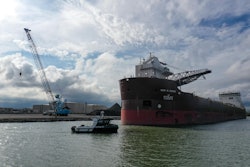
24 Hours: The Litmus Test for Supply Chain Complexity and Robustness
Seen as a blessing or a curse from the Covid lockdown period, depending on your perspective, same-day delivery promises have shone a spotlight on the contemporary challenges faced by supply chain decision-makers in several significant ways.
Consumers have come to expect same-day delivery simplicity, challenging supply chain managers and pushing logistics chains to a breaking point. Yet along with this demand for simplicity, supply chains have become more complex, as intricate as the Gordian Knot, and are now increasingly subject to significant disruption and unforeseen uncertainty.
Same-day delivery, with its countless interconnections with order processing, inventory management, transportation logistics, acts as a magnifying glass to this increased complexity where uncertainty and disruption produce ripple effects leading to delivery delays and financial loss.
This uncertainty and disruption have increased demand volatility, whether availability of supplies, raw materials or component shortages or transportation capacity and we all know that we're just in front of the next disruption. Well-orchestrated same-day delivery is now a clear demonstration of a robust supply chain management that brings a flexible and responsive supply chain, capable of adapting to variable demand and uncertainty.
The Cost and Limits of Current Uncertainty Mitigation Approaches
Even if emergency solutions are still a major part of the equation in dealing with uncertainty, supply chain managers are all responding with different strategies to ensure same-day delivery. Whether it is improving demand forecasts, increasing inventory stocks, implementing dual sourcing, optimizing team capacity in warehouses, or selecting dedicated transport or logistic suppliers to high-risk products/routes, these strategies generate significant costs for a company. All these approaches are limited in their deployment and when implemented often remain ineffective when faced with uncertainty.
In a complex system such as a supply chain, the nature and extent of the impact brought by disruption serves as the cornerstone for ensuing decisions and actions. Understanding this impact must underpin and guide what process to initiate and which people to involve. However, there lies a prominent hurdle for supply chain managers. To deploy strategies like dual sourcing, or an efficient safety stock strategy, it is imperative to have an understanding of what will be the supply chain's most vulnerable, and most impacted, points. Yet, the intricate web of the supply chain, marked by its multifaceted and dynamic nature, obscures clarity. Unraveling the potential impacts and consequent appropriate responsive actions, amidst this complexity, is not just challenging but often unattainable for supply chain managers. The absence of clear, comprehensive insight into the possible cascading effects of disruptions or unexpected events impedes the precision and effectiveness of decision-making.
Evolution of AI Now Enables the Untangling of Intricate Decision-Making Amidst Uncertainty
AI has now matured to a level where it can help address these complex decision-making challenges. Its role for industry has moved from just speeding up simple tasks to forecasting demand, but also to helping solve complex cognitive and industrial tasks in ways that were previously impossible. What is behind these new capabilities, is the convergence of AI techniques and simulation, found in AI Simulation platforms.
AI simulation is now helping supply chain managers overcome the key obstacles that today considerably limit the effectiveness of their strategies. With this technology, they can scan their supply chain for vulnerabilities, simulate the behavior of the supply chain - including production resources, transport policies and resources, stocks and flow management policies. This enables them to know where their plan will fail in case of a disruption and how to minimize risks and costs.
AI simulation solutions reproduce the cascading effects of an event or a decision on the supply chain. Running simulations automatically, generating thousands of scenario variations in the supply chain, managers can identify the top vulnerabilities, those that will have the greatest impact on their business and their ability to deliver on time. This approach gives supply managers the visibility to prioritize, mitigate risks and invest efficiently on weak spots. These weak spots may not be a problem today but may become one in the future. It gives the possibility to work ahead to procure dedicated suppliers or increase warehouse stocks. It can also allow better control of emergency costs and CO2 emissions, in order to have the greatest impact on service levels. Through combining simulation and forecasting analytics, demand and supply planners or Integrated Business Planning managers have the ability to know for example what the consequences of an unforeseen demand variation will be on service levels, costs and other company KPIs such as CO2 emissions.
AI Simulation Supercharges Generative AI for Complex Decision Making
By simulating the future behavior of a system, AI simulation generates new scenarios, and future outcomes with a level of reliability and explain ability that is not possible by using solely machine learning techniques. This generative AI model is built from expert knowledge on the system, taking into account everything that affects its future. All parts of the supply chain can be simulated, edge cases or unknown scenarios can be generated.
To navigate the convoluted terrains of supply chains, AI simulation is also offering both predictive and prescriptive capabilities. What would be the impact on next day delivery if this supplier is disrupted? Which product would be impacted? Supply chain managers can ask concrete questions to know what the consequences of an event or a decision will be, but they can also see how to reach their KPIs. They can set target performance indicators to get optimized mitigation plans and detect new strategies or tactics. Guided by AI algorithms, thousands of simulations are generated and optimized to find the best option.
AI Simulation: A Paradigm Shift for Decision Intelligence Solutions
Gartner underlines how “AI and simulation increasingly work together (...) to enable more sophisticated decision intelligence and to accelerate business optimization.” Warehouse sizing, logistic flow design, operation planning or strategic sourcing, AI simulation use is now spreading across the supply chain.
Above all, large companies in sectors as diverse as automobile products, technology equipment or cosmetics, are deriving value from increased resilience and impressive gains in the use of AI and simulation on the supply chain, reducing, for example, their transport costs by over 15% while maximizing service levels.
AI simulation represents a paradigm shift for decision intelligence solutions in the supply chain, driven by the impact of decisions and events, rooted deeply in the unpredictable terrains of variability. Whether applied on the last mile or scaled to the end-to-end supply chain, it is certain that AI simulation will increasingly serve as the compass for businesses to sail through complexity and uncertainty with more confidence, and agility, minimizing revenue risk and giving them a competitive edge. Times of crisis accelerate innovation and the next-day-delivery expectation that was born from the Covid confinement, forced us to find a way to get closer to making it as easy as consumers think it is.



















